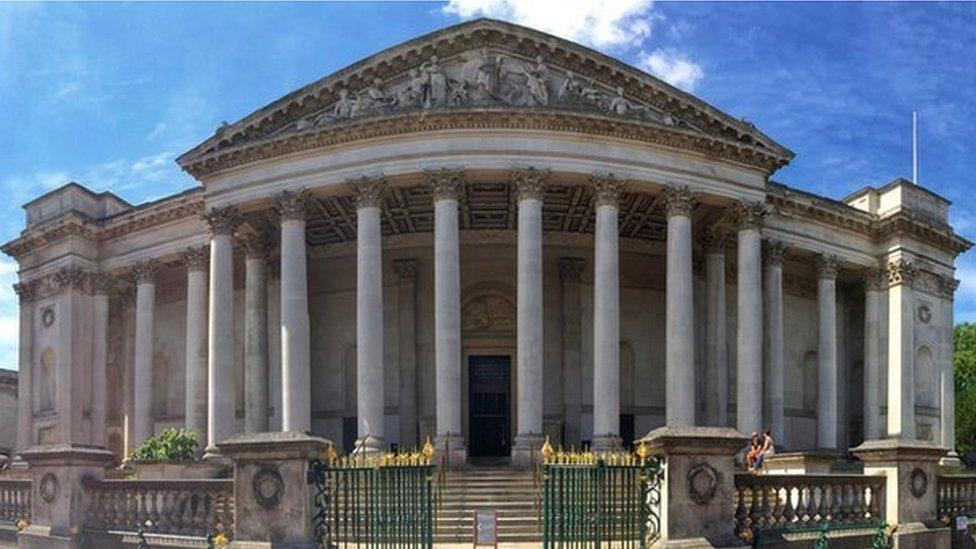Fitzwilliam Museum shows 'iconic queer art' jewellery
- Published
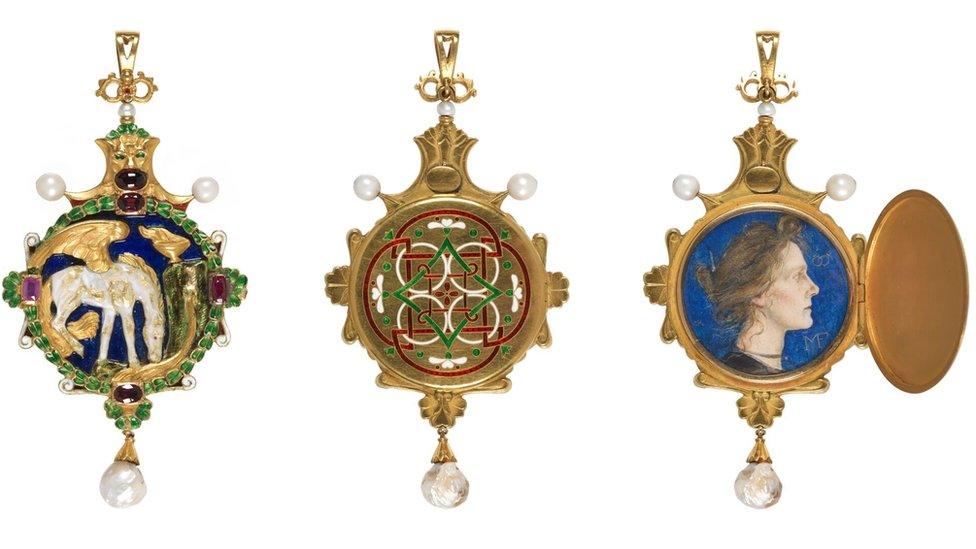
Charles Ricketts presented Katherine Bradley with this miniature of her partner Edith Cooper in 1901 and also created a pendant to house it
Late 19th Century jewellery with "an iconic place in the history of queer art in Britain" is going on display at an exhibition in Cambridge.
They were created by artist Charles Ricketts for the literary couple Katherine Bradley and Edith Cooper.
The pair had a personal as well as literary relationship and wrote under the pen-name Michael Field, until the truth behind the name was uncovered.
The pieces are part of a collection owned by the Fitzwilliam Museum.
The museum will exhibit 70 items of jewellery and metalwork, many on display for the first time and much of it previously undocumented.
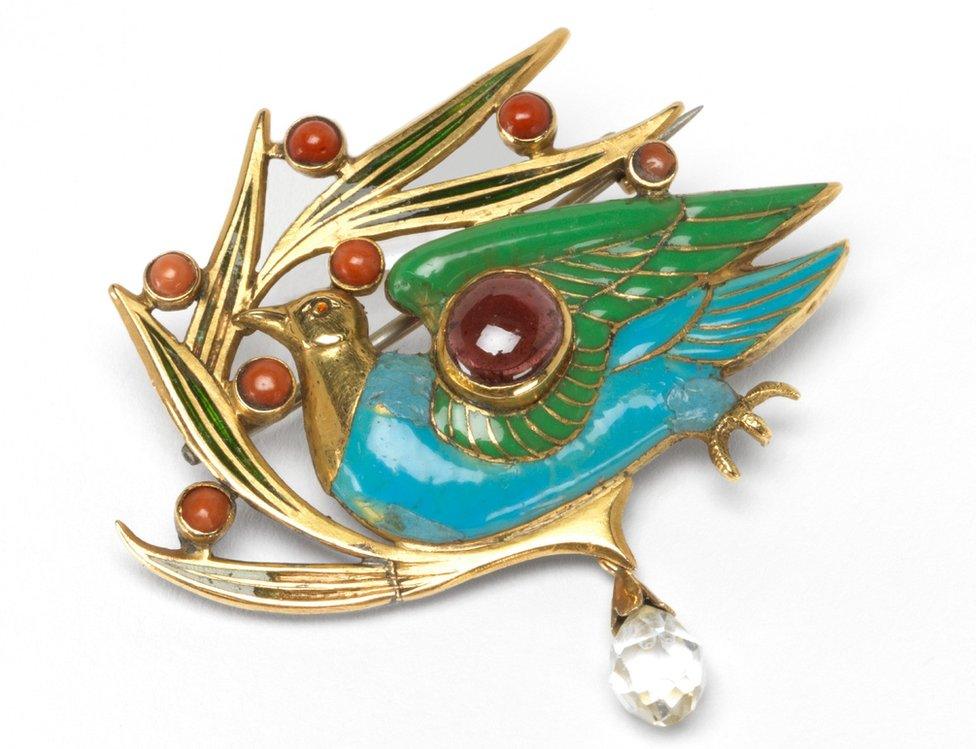
The Fitzwilliam said the jewellery, which includes this brooch created for Edith Cooper in 1899, has an "iconic place in the history of queer art" in Britain
Katherine Bradley was Edith Cooper's aunt and the pair wrote poetry and plays.
Museum research assistant Helen Ritchie said their relationship "broke the rules dictated by 19th Century society" and they "enjoyed a long and devoted romantic relationship".
The discovery that Michael Field was in fact two women "undoubtedly affected their commercial success", she said.
In 1894 they met Ricketts, whose partner was the artist Charles Shannon, and the couples became friends.
Only some of the pieces created for the women have survived and the jewels exhibited were bequeathed to the Fitzwilliam by Bradley.
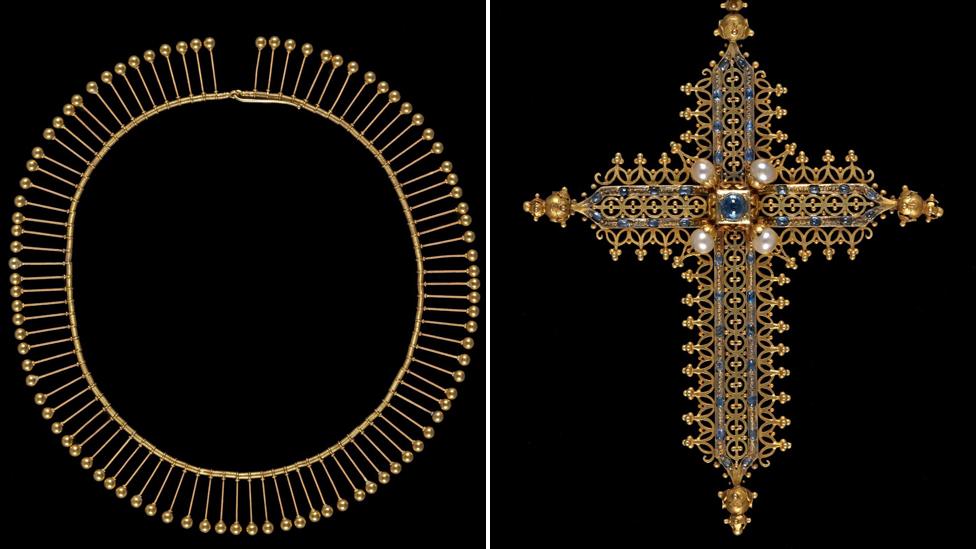
Pieces from the 1860s were often inspired by archaeological finds or jewels seen in Renaissance paintings - the cross was donated to the museum by collector Anne Hull Grundy
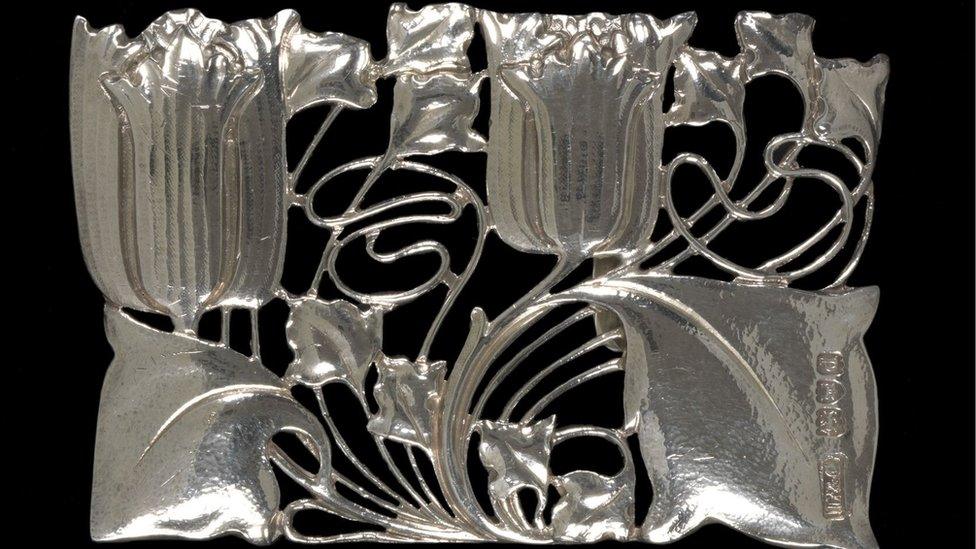
Archibald Knox's swirling designs were produced for London store Liberty and became synonymous with English Art Nouveau
The objects are a "previously overlooked" part of the museum's collection, according to the director of the Royal Collection Tim Knox, who was until recently the Fitzwilliam's director.
He said it does not have room to permanently display all its collections and the exhibition will showcase "extraordinary examples of craftsmanship".
Ms Ritchie said they "tell a story of industrialisation and trade, of travel and exploration and the effect of other cultures on British life and design".
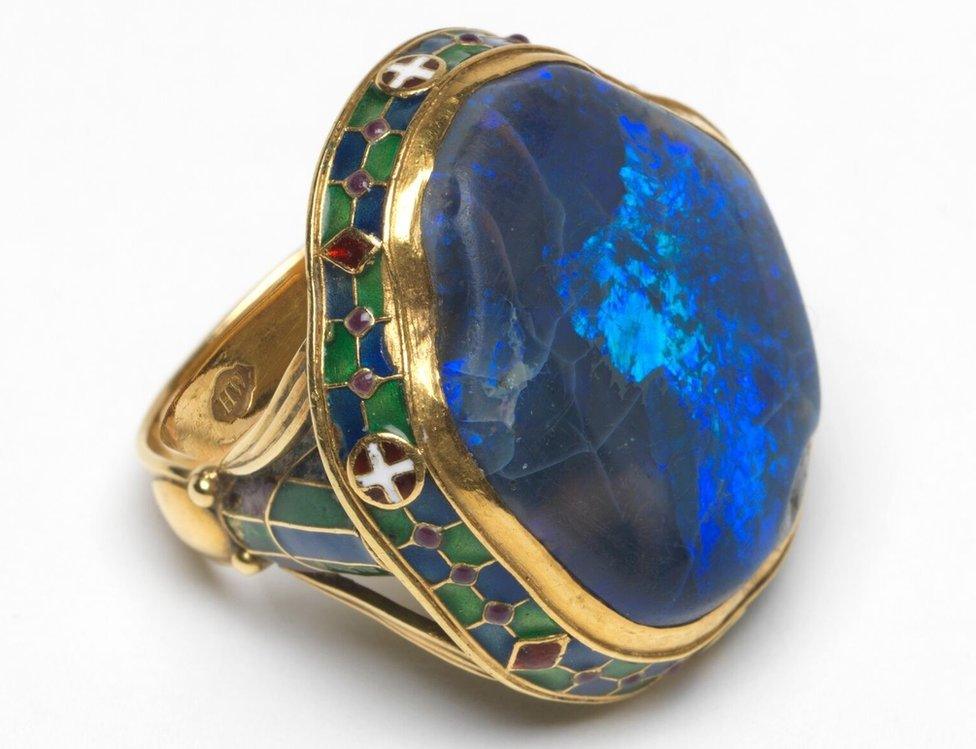
Architect-turned metalworker Henry Wilson created this gold and opal ring early in the 20th Century
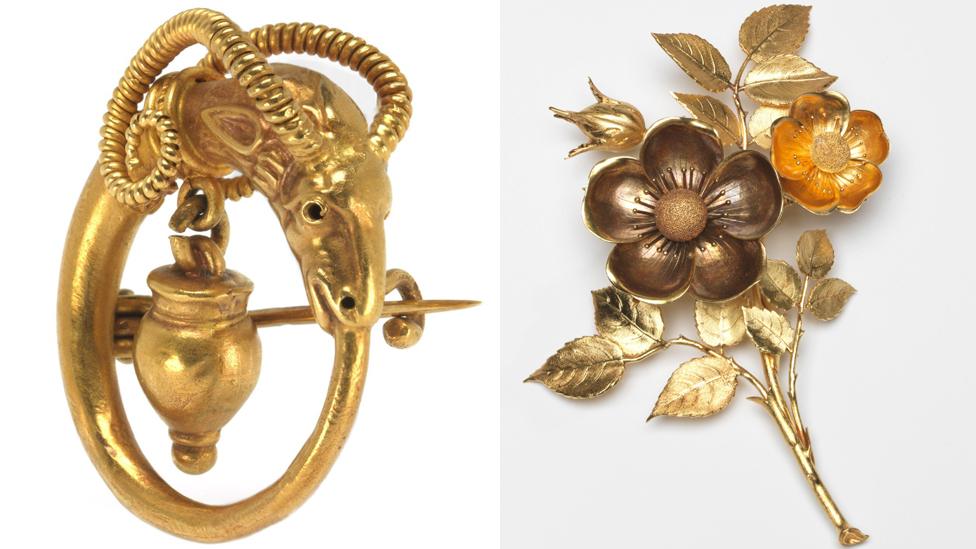
Rome-based Alessandro Castellani is credited with inventing a market in jewellery inspired by ancient civilisations (above left) while London-based Hunt & Roskell produced more traditional jewellery (right)
The majority were donated by Anne Hull Grundy, who was born in Germany to a Jewish family which emigrated to England in 1933.
Ms Ritchie said: "In many ways... she was the first collector to take jewellery seriously as another avenue of art history."

The objects span the changing styles of the period, including Gothic (left), Arts and Crafts, Art Nouveau (right) and inter-war structural modernity
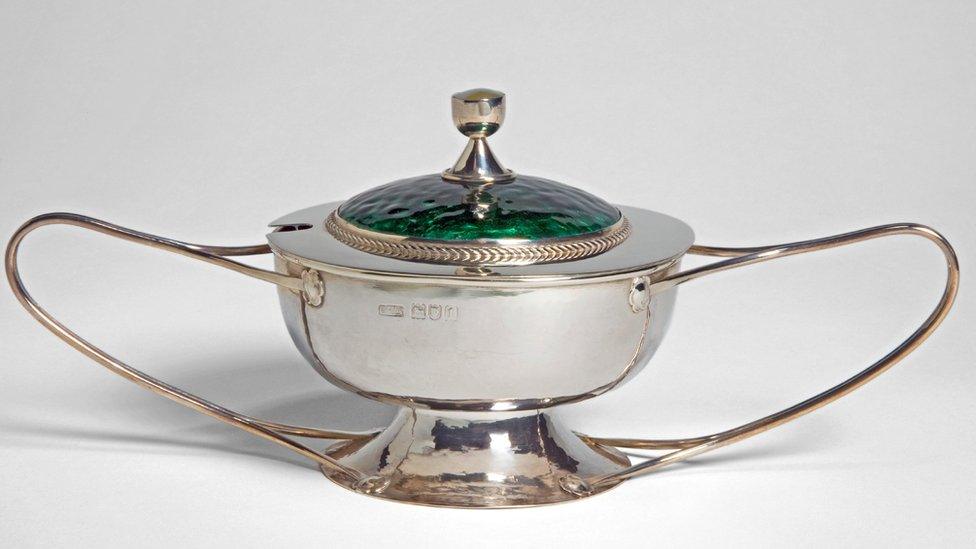
Designers & Jewellery 1850 to 1940 opens at the Fitzwilliam Museum on 31 July
- Published25 September 2017
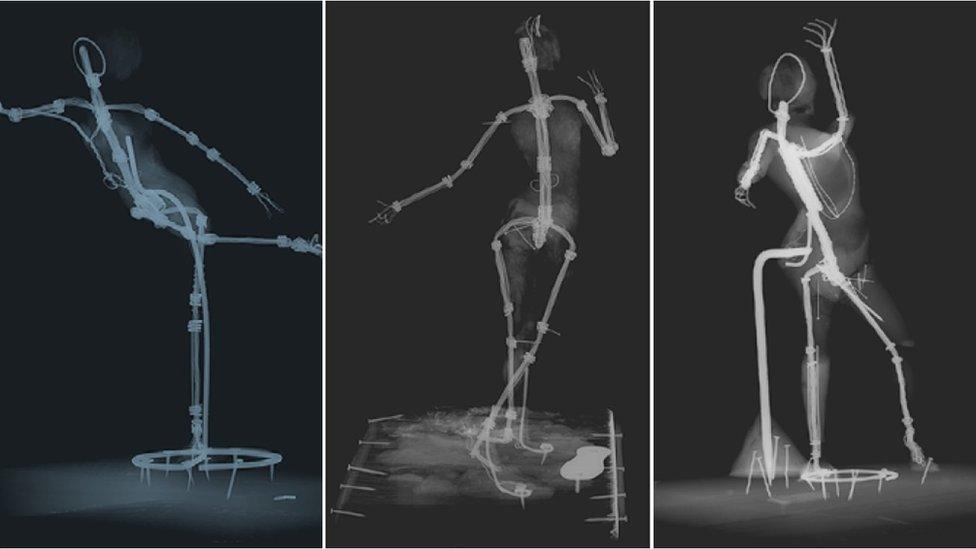
- Published19 September 2017
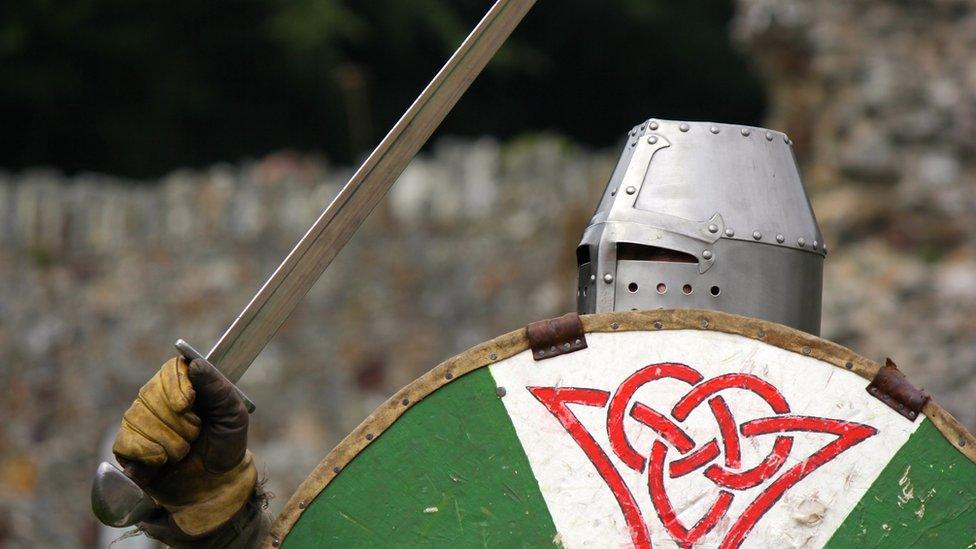
- Published17 May 2016
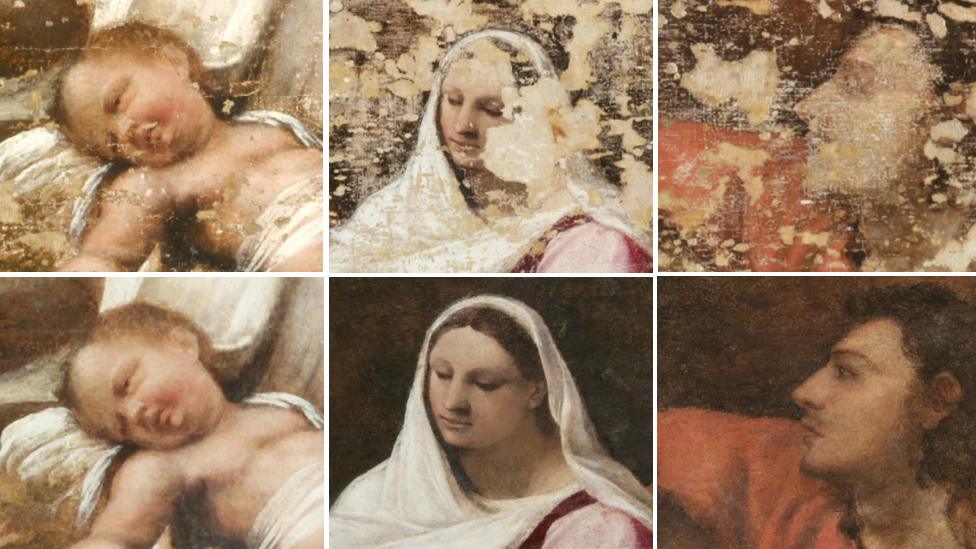
- Published4 February 2016

- Published2 January 2016
